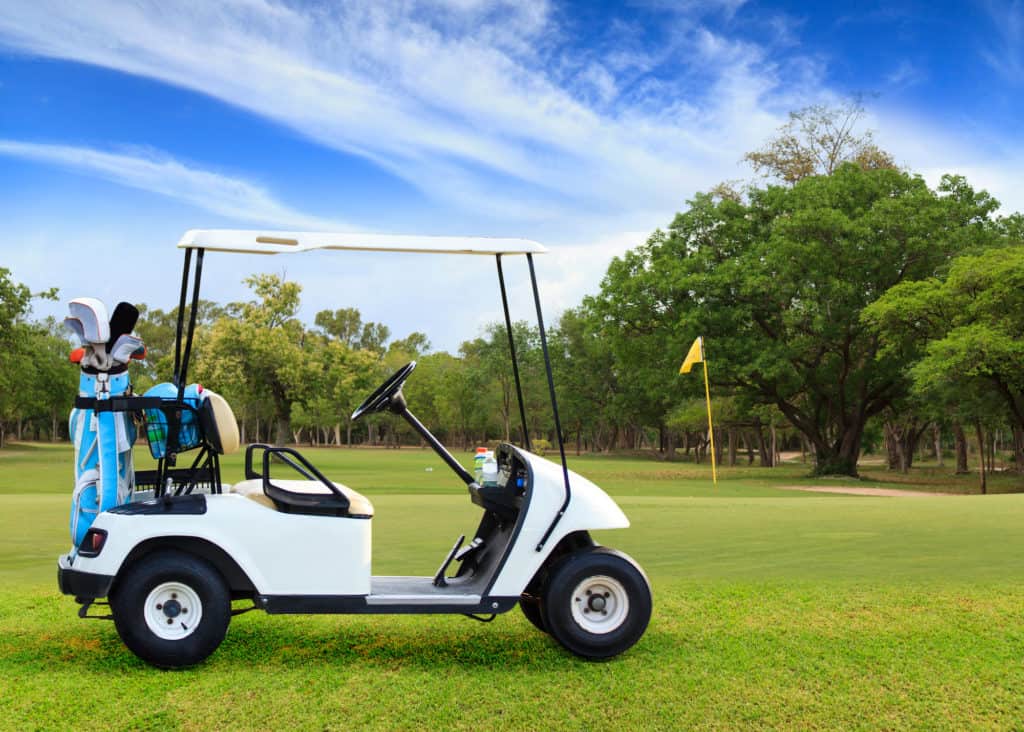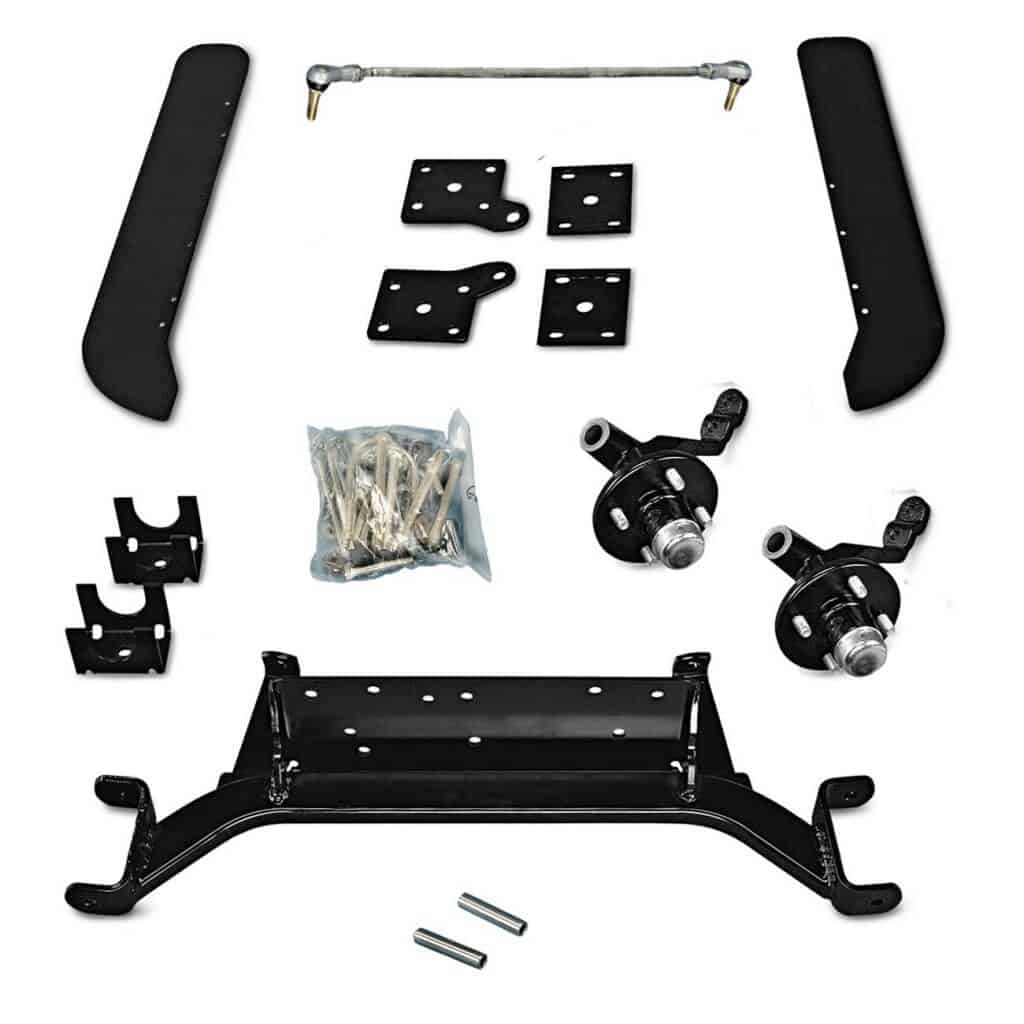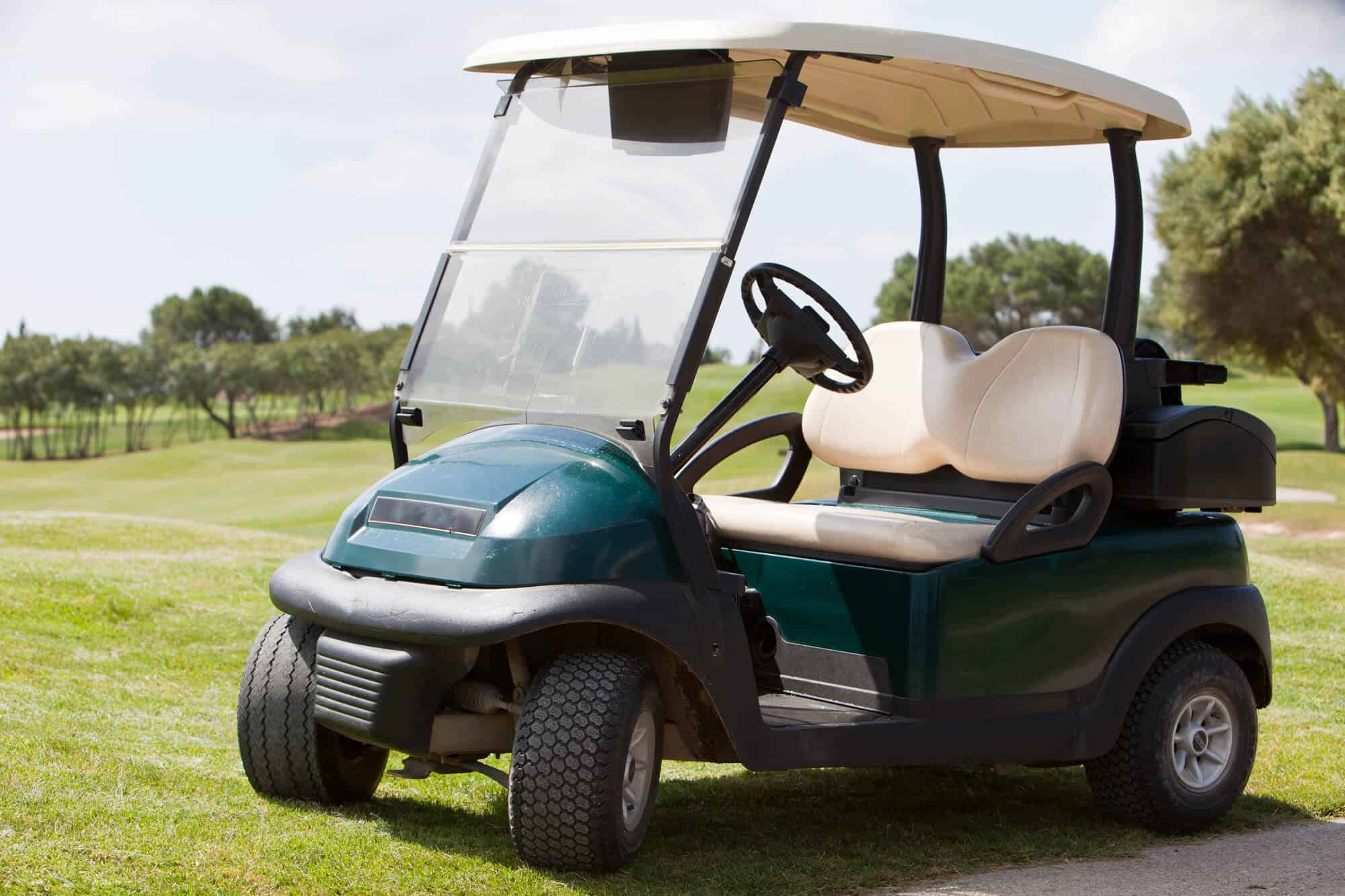
A properly running golf cart should make no excessive sound as it operates, beyond the typical sounds of the engine and the wheels.
However, there may be times when you hear noises which don’t sound right for your cart, noises that may sound an awful lot like squeaking.
Squeaks on a golf cart are a very frustrating situation because they usually indicate a persistent concern.
Some of these issues aren’t that serious, thankfully, and many golf cart owners like you should be able to handle them.
However, there are other types of squeaking that may become more persistent and which may be the result of serious issues.
To help you manage this situation properly, we have compiled a list of the five most common reasons your cart squeaks.
Each section will have a handful of fixes you can use to provide your cart with the best chance of avoiding serious damage.
At the end of the article, we have also added a detailed list of other sounds you may hear which may sound like squeaks and included a few fixes for these common issues as well.
Why Does My Golf Cart Squeak?

The five most common reasons a golf cart squeaks include bad rubber bushings, front and rear spring failure, slipping belts, loose parts rubbing together, and problems with your wheels.
We have arranged these problems in descending order of frequency, but we suggest that you rule the top ones out first, before progressing to the number one reason.
This structure is designed to narrow down the types of problems which may be affecting your cart to make it easier for you to fix them.
The higher-numbered concerns are probably the types you’re going to need to get a professional to repair for you.
The lower-numbered damage is typically something you can do on your own.
As you go down the list and check off these repairs, you can narrow down the final cause of your squeaks.
In this way, you can not only save yourself money by focusing on the least expensive issues but also find other problems along the way.
1. Bad Rubber Bushings

The bushings in your golf cart are designed to provide a myriad of protections and to keep different parts of the cart from rubbing together or causing any concerns.
However, they need to be properly maintained from time to time to ensure that they don’t end up losing their lubrication or rubbing and causing a squeak.
Typically, this type of squeak is most common when your cart is a little older or if you didn’t spend a lot of money on a high-quality model.
If your cart runs into this trouble and you want to make sure it properly operates, there are a few steps you can take.
First of all, you need to look through your cart to find all of the bushings and identify whether they are worn out and need to be replaced.
You should notice damage around the edges of the bushings or scrapes in their rubber surface or a lack of protection in and around the bushing.
After inspecting, you need to take steps to ensure your bushings are as strong as possible by either replacing the damaged ones or greasing the fittings.
When you replace your rubber bushings, it is probably best to go with urethane ones which are stronger and more capable of withstanding this type of damage.
Then, you should make sure to grease all of the fittings with an appropriate type of lubricant to stop the squeak.
2. Front and Rear Spring Failure

The front and rear springs on your golf cart serve as the suspension, keeping your cart from bouncing up and down too much as you ride.
As a result, they are put under a lot of stress which may cause wear and tear throughout their metal structure.
When this happens, your golf cart may end up squeaking as the springs go up and down and continue to wear down as your cart rides.
The easiest way to fix this problem is to identify the springs which are squeaking and to apply a silicon lubricant to them.
This type of spray is quite easy to apply and doesn’t cost a lot of money to purchase, which makes this a fairly easy repair.
However, we have it higher up on this list because your springs may end up failing, and at that point, you’re going to need to replace them with the help of a professional.
3. Slipping Belts

The belts within your cart—mostly in gasoline models—are necessary for transferring the energy of the engine to the other parts of the vehicle, resulting in motion.
However, these belts can start to wear down or end up with lubrication issues that make them squeak heavily.
You’ll probably notice this problem if you ride your cart for long periods because it is more likely to occur when you have been driving and the belt has warmed up a bit.
Fixing this problem requires examining the pulleys to make sure they are not sticking and are properly lubricated.
Your belt may also be wearing down and even fraying which is a problem that can cause the belt to both squeak and whine as it runs.
Replace any frayed belts right away, before they break, to avoid damaging your engine, and lubricate or replace any pulleys which continue to squeak on your cart.
4. Loose Parts Rubbing Together

As your cart ages and operates, there is a good chance that some parts may end up working loose underneath it.
For example, there may be plastic elements of the chassis that work loose if nuts or bolts come out, causing them to hang a little.
When this happens, the part will rub up against the wheel or another part of the chassis and cause a squeaking noise which can be quite unattractive and annoying.
There may also be loose parts throughout the interior of the cart that rub together as you drive the cart down the road.
This issue is one that may occur regularly on older carts because they are more likely to have the kind of configuration which may trigger this type of operational situation.
Thankfully, repairing his type of damage is not too hard if you understand how to examine your cart and fix these hanging parts.
Start out by looking underneath your cart for any hanging parts that may have come loose and see where they may rub.
Next, fix these parts so that they don’t hang any more. This often requires simply tightening up nuts and bolts that may have loosened, but interior issues may require expert help.
5. Squeaking Wheels

Lastly, the most likely trigger for squeaks throughout your cart is an issue with your wheel or wheels that needs to be addressed.
Most of the time, this problem is common if the lubricant on your wheels—including throughout their bearings—is drying up.
When this happens, the parts may rub together when they run, making an annoying, squeaking noise that can be hard to properly address.
Thankfully, this problem is pretty easy to fix as long as long as you know exactly which parts to lubricate and don’t use the wrong type lubricant.
You may be tempted to use WD40 or a similar type of lubricant, but we suggest that you avoid this kind when working on your cart.
WD lubricants stand for “water displacement,” which means they are designed to prevent rust and may not be good for your wheels.
Instead, you should use a spray lubricant on all of the areas where your wheel turns on the axle. Don’t go into a more “delicate” approach by focusing on smaller areas.
Typically, a squeak indicates a widespread lack of lubricant which may require you to fully lubricate the entire area.
Thankfully, this process is one that you can usually do yourself, saving you money and avoiding complications.
Other Noises That May Sound Like Squeaks

Although squeaks are probably the most common sound you’re going to hear when your cart is malfunctioning, there are many other noises which may have a similar tone to squeaks.
These sounds are often more persistent and problematic than squeaks and may be connected to them by sounding somewhat like a squeak, confusing your diagnostics.
As a result, it is important to take a look at the different noises that you’re likely to hear when your cart runs into operating issues.
By understanding how to tell these noises apart and the issues that cause them, it should be easier for you to keep your cart in strong operating order.
Just as importantly, it can ensure that you fully understand when it is time to take your cart to a repair expert as many of these concerns are things that you may not want to fix yourself.
1. Whining Noises
A whine can sound like a squeak if it gets intense enough in pitch and if it is persistent enough as your cart runs.
Typically, whining noises aren’t among the most dangerous types that your cart is going to experience as it runs.
That said, you do need to fix them right away to ensure that they don’t become louder, more persistent, and trigger more issues.
Most of the time, whining noises are caused by problems such as your input shaft bearings, motor bearings, worn down brakes, problems with your gears, electrical fittings, and poor fluid retention.
As you can see, most of these issues are things you should probably get a repair expert to handle for you.
However, you can probably check the fluid levels throughout your cart and change them as needed to ensure that the whining noises go away and don’t trigger any problems.
2. Grinding Sounds
Grinding noises may not sound a lot like squeaks when they intensify, but many grinding issues start out as squeaks and become progressively louder and more difficult to tolerate.
As with whining issues, most of these grinding sounds are usually caused by problems with various types of bearings throughout your motor.
Once you start to notice a grinding sound—as it goes from a squeak to a grind, specifically—you’re probably going to notice the sound level becoming louder and more intense.
That’s because bearings, once they start to go bad, often fail almost entirely and can become almost unusable in a matter of hours.
As a result, it is important not to mess around with this situation and to reach out to a professional to do these repairs for you.
Don’t make the mistake of trying to handle these fixes on your own or you’ll end up with a cart that is more likely to either continue grinding, worsen its grinding, or stop driving.
3. Buzzing Sounds
Now, when we say, “buzzing sounds,” we don’t mean that your cart is going to sound like a bee or a hornet going off.
Instead, we mean a strange buzz which can sound like of like a whine and a squeak at the same time. The sound should be somewhat jagged but regular.
This type of buzzing typically happens most often when water gets under various parts of your cart and triggers some friction.
The floorboards are where this issue usually develops, so you should take them out and let them dry after it rains to avoid it.
However, you may also have some water in your forward and reverse switch which may cause it to buzz and even trigger some electrical troubles.
This type of water-related danger is one you have to take very seriously or else you might end up getting shocked.
Instead of attempting to do this fix on your own, we suggest that you talk to a cart specialist to ensure you don’t cause any more problems.
4. Clicking Sounds
Many golf cart owners hear “clicking” noises when they run their cart, usually when they get up to an average or above average speed.
Thankfully, that type of click is something quite normal for a golf cart and is not anything you need to worry about most of the time.
Typically, a click on a golf cart indicates that the wheels are going at a good pace, and they may be lightly touching the sides of the vehicle chassis, causing this clicking sound.
However, there may be some clicks that are problematic for the operation of your golf cart and must be fixed right away.
For example, wheel bearings rubbing up against the wheel drums may trigger a click sound which can be quite devastating as it worsens.
You may also hear a “click” if your golf cart has any loose bolts that are wiggling in place as you ride along on your cart.
Typically, you’re going to have to check your bearings, the friction modifier—a part that helps to change the friction on your cart to avoid fire risks—and also check all of the bolts to make sure that they are tight.
You may also want to check the bottom of your tires because, sometimes, a click might be something as simple as an item embedded in the tread of the tire.



Excellent coverage of the topic. I was able to quiet my squeaks using your guidance and I thank you.